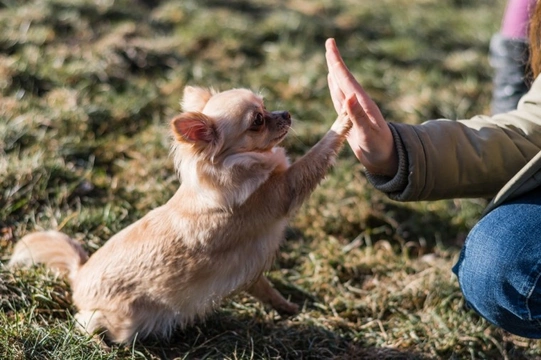
What tone of voice should you use with your dog?
When it comes to human conversation and interactions between people, we often talk about the fact that it is not always what someone says but rather how they say it that indicates the speaker’s true meaning, regardless of the words they are using.
Because humans are so verbal in nature, this is something that we often overlook. But when we are taking part in a conversation with each other, we’re actually processing information not just about the words spoken but also based on body language, facial expression and tone of voice – it’s how you can tell if someone is making a good-natured joke with you, or laughing at your expense, and otherwise find out the real intent behind a statement.
Tone of voice is also hugely important when it comes to dealing with dogs, even more so than with humans – because dogs don’t speak our language and actually glean more information from your tone of voice than they do from what you’re saying. If you’ve been calling your dog back to you in the park and they’re not responding, promising them all manner of treats and rewards if they just come back isn’t going to work either if your tone of voice belies your irritation, and your dog will pick up on this even more effectively than a person would.
However, being able to successfully moderate our tone of voice when dealing with our dogs regardless of mood can take practice, and to execute this successfully, you first need to know what tone of voice to use, and how dogs respond to different tones and moods.
In this article we will look at how dogs hear and interpret our tone of voice, the right tone of voice to use with a dog, and how to recognise and correct things if the way you speak to your dog isn’t proving effective. Read on to learn more.
What your dog hears
Whilst dogs can pick up and recognise some specific words we use when trained to do so – such as their name, and the words used for common commands – most of our human conversation takes the form of background noise to dogs.
What they hear when you speak to them or around them is your tone – which indicates your mood, demeanour and how you are likely to react to the dog in your turn. This means that if your tone and your words don’t match up – such as if you’re begging your dog to come back to you and getting wound up about it – even if you think you’re speaking in an encouraging tone, your dog will pick up on your annoyance, and this won’t help to incentivise their following your command.
A dog can hear a smile in your voice just as they can hear if you’re forcing words out because you’re so mad you can barely speak, and they do of course also read our body language and facial expressions too, viewing a complete picture rather than one based on just your words or tone alone.
Consistency and using terms and tones together
In order for your dog to recognise certain words (like their name or a command) these words need to be used frequently and consistently. The consistency required does not just mean the use of a set word but also the tone that you use it in. For instance, if you say your dog’s name in a number of different tones or voices, or place the emphasis on different parts of the word or commonly use nicknames for your dog too, it won’t be as obvious or easy for them to pick up.
Additionally, our tones change often quite significantly depending on our mood and what else is going on, such as if we are in a rush, stressed out or not paying full attention. Dogs respond much more positively and usefully to positive stimulus, regardless of context, which is why positive reinforcement training is much more effective than punishment.
By the same principle, your dog will respond much more positively to a friendly, calm, encouraging and welcoming tone than they will to one that is rushed or tense. Regardless of the cause of your mood, your dog will read it and be discouraged if their assessment is negative, as they don’t know that they’re not the cause of your dissatisfaction.
Recognising and moderating your tone of voice
Our moods and feelings very much tend to come out in our tone of voice, so if you feel that your tone in certain situations is hindering rather than helping communication with your dog, you need to work to recognise and address this.
Identifying the fact that you’re annoyed or stressed before you call or speak to your dog is the first step, but your dog will also read a false tone quite effectively too, because your body language won’t match up.
This means that if you are getting wound up and know that your tone is going to make things worse, you first need to be able to spot this happening and work out a way to correct it. Take a deep breath, think about what you’re doing and relax for a moment, to ensure that you can keep your voice neutral or encouraging when you do speak.
Trying this out in the real world can take some practice but it will pay off, and over time, you will begin to see how much more positively your dog responds when your tone of voice is designed to help, rather than hinder your approach!



